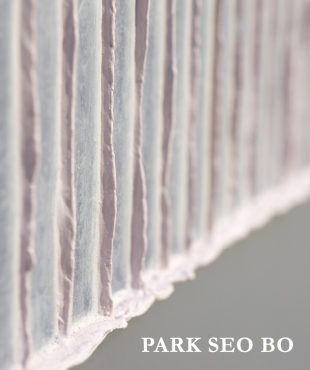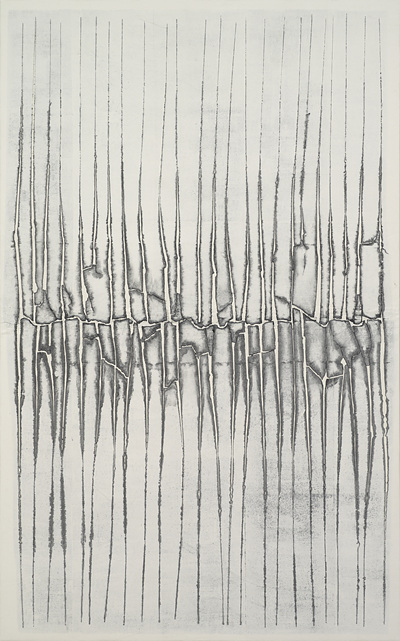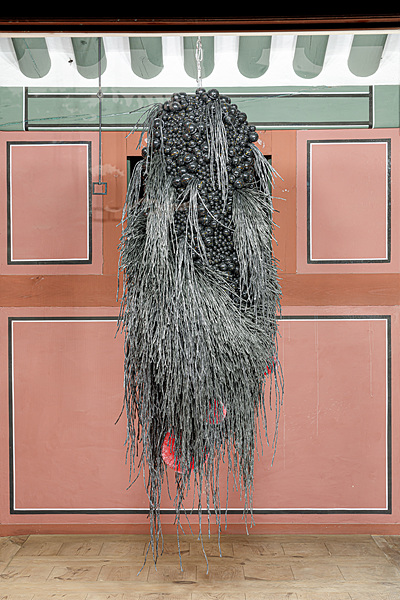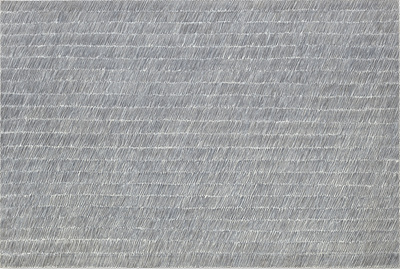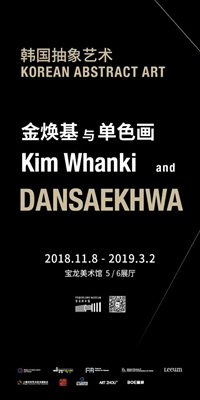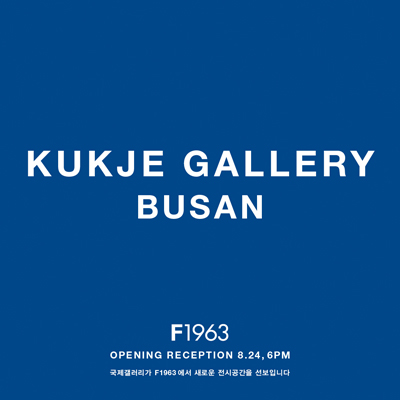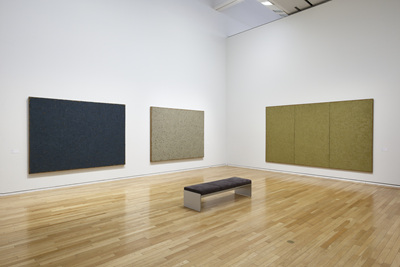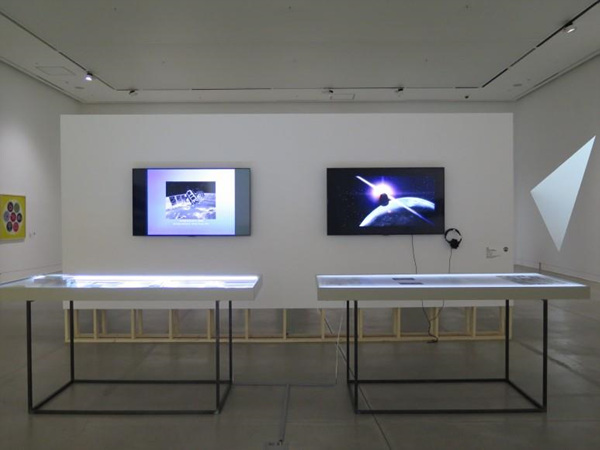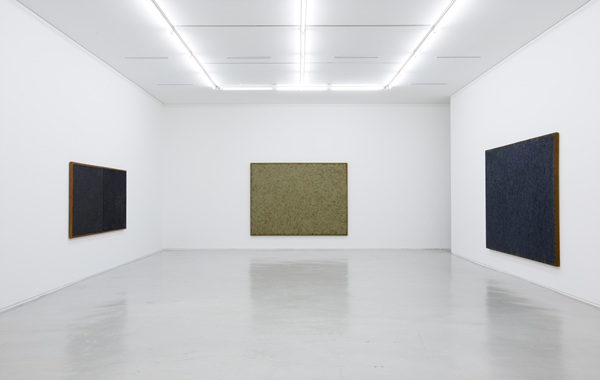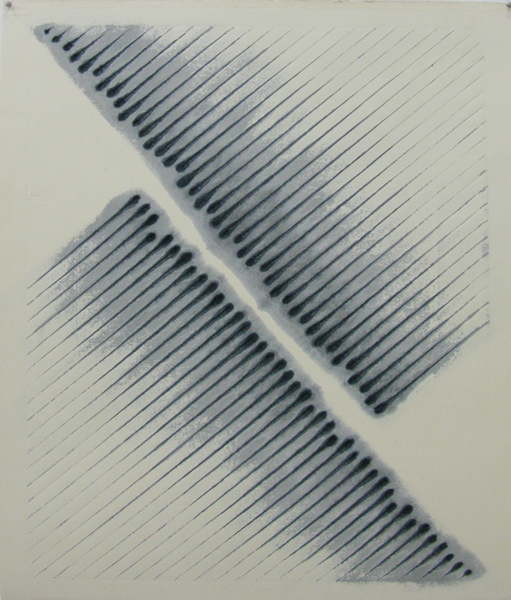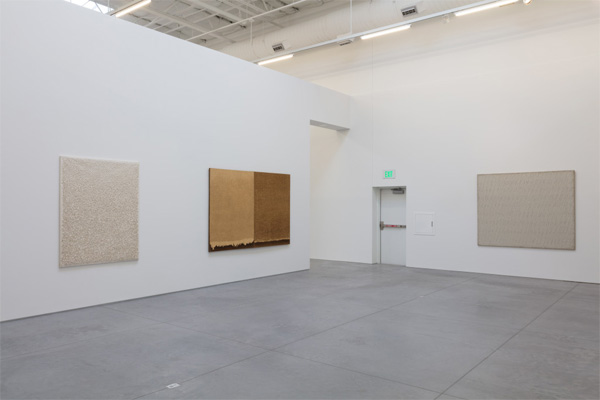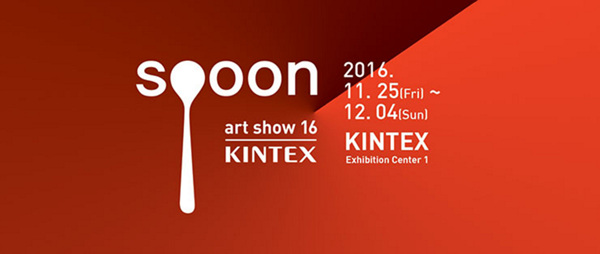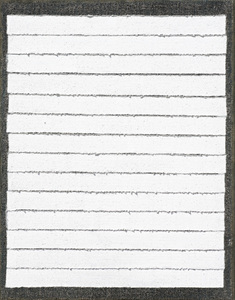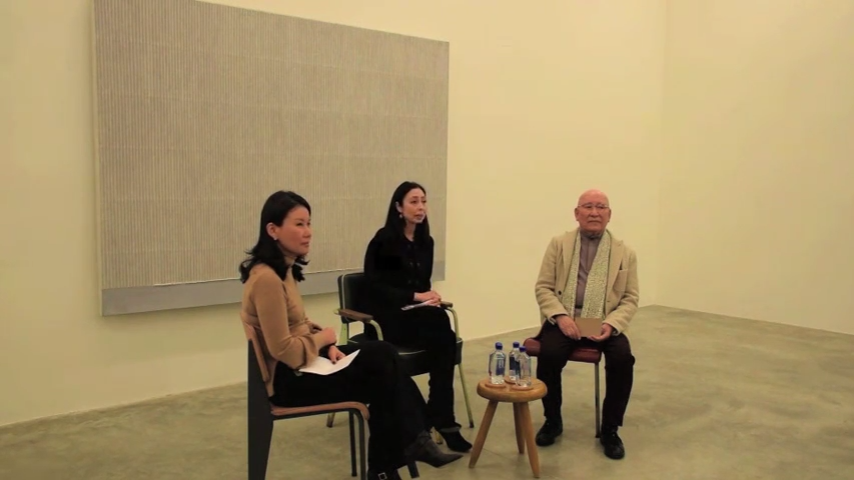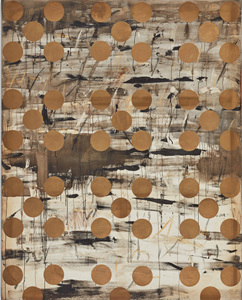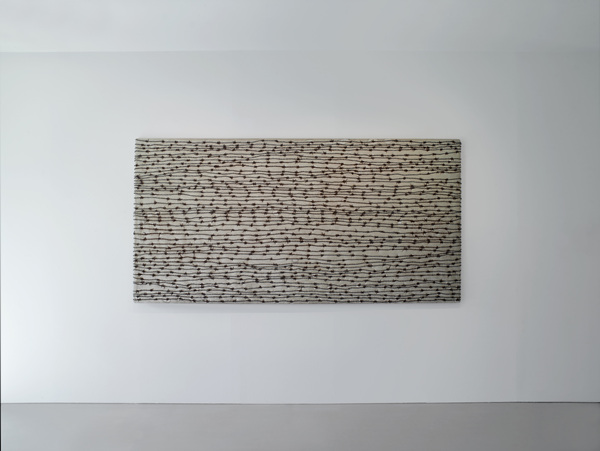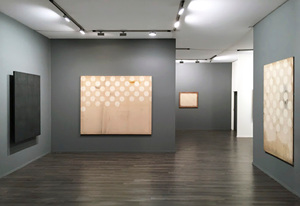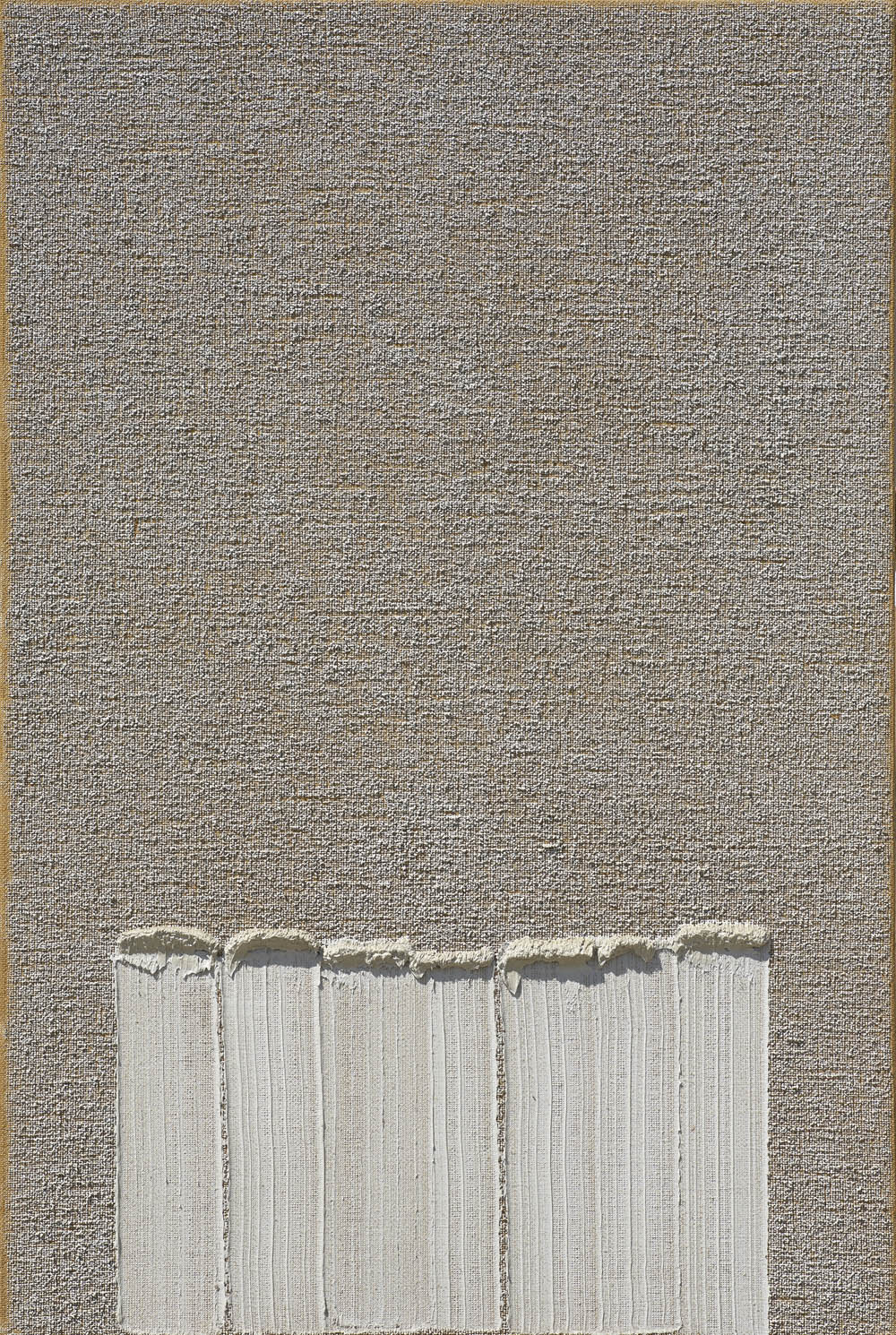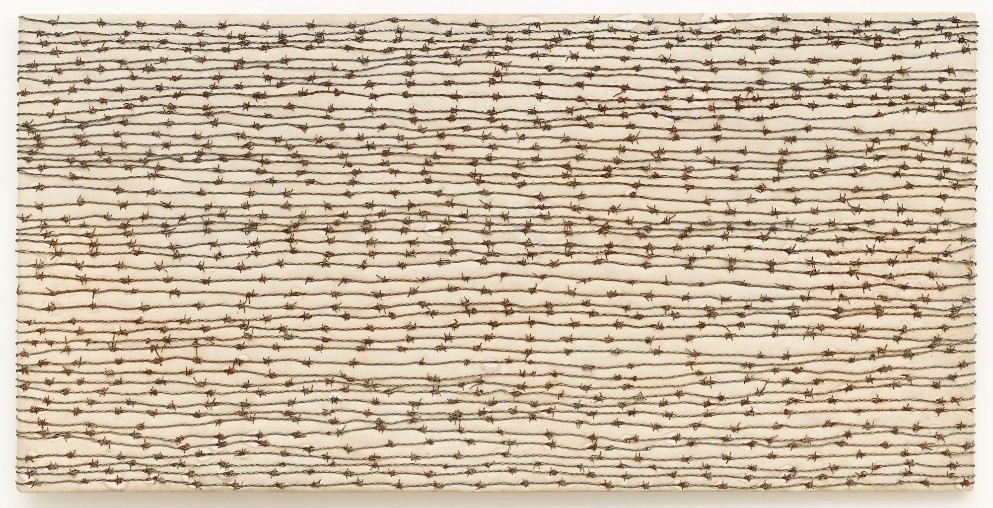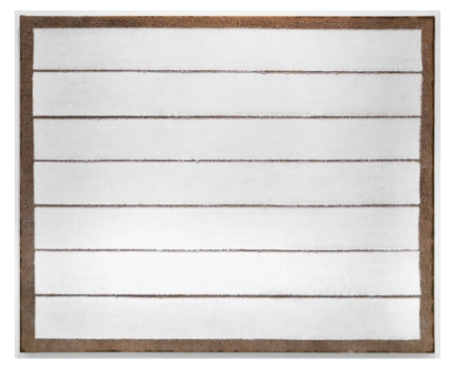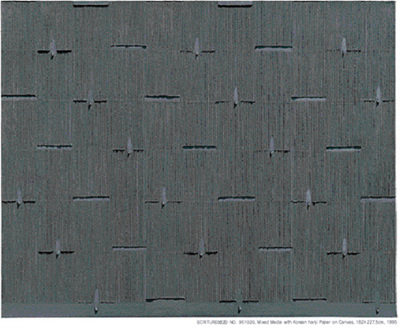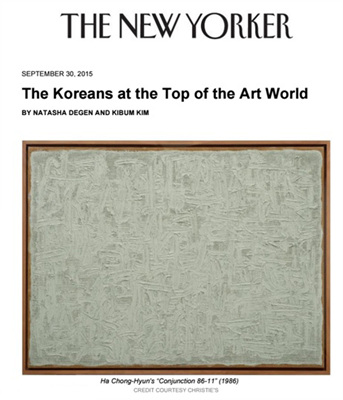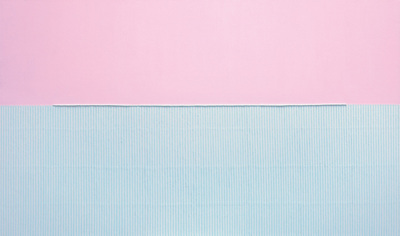 Park, Seo-Bo | KUKJE GALLERY
Park, Seo-Bo | KUKJE GALLERY

Nov 25, 2010 - Jan 20, 2011
K1 K2
Seoul
INTRODUCTION
관람 안내
전 시 작 가: 박서보 Park Seo Bo (Korean, 1931-)
전 시 일 정: 2010년 11월 25일 - 2011년1월 20일
전 시 장 소: 국제갤러리 본관, 신관 (문의: 735-8449)
개 관 시 간: 월요일-토요일: 10am - 6pm, 일요일: 10am - 5pm
전시 개요
국제갤러리는 박서보의 개인전을 개최한다. 박서보는 1950년대 문화적 불모지였던 한국미술에 추상미술을 소개한 작가로, 한국의 현대미술사에서 가장 중요한 위치를 차지하고 있는 인물로 손꼽힌다. 한국 현대미술이 지난 60여 년간 걸어온 발자취를 살펴보면 수없이 다양한 실험과 변화들이 시도되어왔음을 알 수 있는데, 작가 박서보는 이러한 격변의 한국미술사의 중심에 서 왔다. 예술가로서, 교육자로서 한국 미술계의 주역으로서 그가 보여준 다양한 기여는 많은 예술가들에게 예외적인 사례이자 모범으로 받아들여지고 있다.
국제갤러리는 올해로 팔순을 맞는 박서보 작가의 40여 년에 걸친 작업세계를 조명한다. 총 50여점이 전시되는 이번 전시는 작가의 다양한 작업 중에서도 전후기 묘법시대와 에스키스 드로잉 작업에 초점을 맞추었다. 본관과 신관 두 개의 전시관을 통해 선보이는 본 전시는 시대별로 구획되어 박서보 작가의 초기작업에서부터 최근작업까지 40여 년을 아우르는 작업의 변천사를 감상할 수 있다. 이들은 단순한 작업방법의 변천을 넘어서서 “그리기는 자신을 갈고 닦는 수신(修身)”이라 언급하는 작가의 작업관을 고스란히 드러낸다. 부단히 그려가는 작업에서부터 다시 모든 것을 비워내는 60여 년의 작업여정을 통해, 이번 전시는 박서보의 변함없는 창작의 투혼과 함께 한 작가의 원숙한 삶이 만들어 내는 깊이를 감상하는 의미 깊은 자리를 마련할 것이다.
작가 소개
1931년 경상북도 예천(醴泉)에서 태어난 박서보는 홍익대학교 미술대학 서양화과를 졸업하였다. 1962년 대학 강단에 선 이후 1997년까지 홍익대학교 교수, 산업미술대학원장 등을 역임하였으며, 이 후에는 홍익대학교 미술대학 명예교수로 선임되었다. 교육 이외에도 예술계에서 다양한 활동을 전개해 온 그는 한국예술문화단체 총연합회 부회장(1977-1979)과 한국미술협회 이사장(1977-1980) 및 고문(1980)을 지냈으며, 1994년 서보 미술문화재단을 설립한 이후 현재 이사장으로 재임중이다.
박서보는 1957년 한국 엥포르멜(Informel) 운동에 주도적인 역할을 한 현대미술가협회의 주요 멤버로 활동한 뒤, 1961년 세계청년화가 파리대회에 참가하여 추상표현주의 미학을 바탕으로 한 원형질(原形質)시리즈를 전개하였다. 1960년대 중반부터는 유전질, 허상(虛像)시리즈를 발표하며 보다 발전된 추상표현주의를 선보인다. 이어, 1970년대 이후 묘법(描法)회화를 통해 새로운 전환을 시도한다. 작가 스스로가 지칭하듯 '손의 여행'으로 일컬어지는 묘법은 그의 회화의 정점을 이룬다는 평을 받으며 국제적인 명성을 쌓기 시작했다. 초기의 묘법 회화와 더불어 1980년대 이후 본격화 된 후기 묘법에서는 종이 대신 한지를 이용하여 대형화 된 화면 안에 선 긋는 행위를 통해 반복적인 구조를 드러내며 고도의 절제된 세계를 표현하였다. 특히 이 묘법 회화는 시간이 지남에 따라 변화하는 과정을 거치며 완성에 이르는 동양회화의 정신세계를 고스란히 담아낸다.
60여년에 걸친 작업의 여정을 드러내듯 국내외 유수의 기관에서 그의 전시가 개최되었다. 대표적인 전시로는 1991년, 국립현대미술관에서 작가의 회화40년을 기념하는 대규모 회고전이 있으며, 2006년에는 메트로폴 쎙띠엔느 근대미술관(Musée D‘art Moderne, Saint-Etienne Métropole)에서 열린 개인전을 손꼽을 수 있다. 또한 유럽과 미국, 아시아를 넘나들며 국제적인 그룹전에 참여하였는데, 대표적인 전시로는 파리비엔날레(1963)와 베니스비엔날레(1988) 그리고 영국의 테이트 갤러리(리버풀 1992,2002)등이 있다.
작가는 1972년 대통령 표창을 수상하였고 이후, 대한민국문화예술상, 옥관 문화훈장 등을 받았으며 2008년에는 한국미술협회에서 주관한 미술상인 ‘올해의 미술상’을 받기도 하였다. 그의 작품은 현재 일본 도쿄도 현대미술관과 후쿠오카 시립미술관을 비롯하여 프랑스의 FNAC(Fonds National d’Art Contemporain) 그리고 국립현대미술관, 서울시립미술관 등 국.내외 유수의 미술관에 소장되어 있다.
작품 세계
“회화는 이제 나에게 자기수련의 양태, 또는 도구일 뿐이다.
그러나 그것은 단순한 도구가 아니라 자기수련의 산물에 다름아니다”
오늘날 한국미술을 논함에 있어 작가 박서보를 거론하지 않는 일은 참으로 어려운 일이 아닐 수 없다. 1950년부터 오늘날에 이르는 반세기에 걸친 시간 속에서 한국미술의 끊임없는 발전과 실험적 운동들의 선두에는 늘 작가 박서보가 있었기 때문이다.
이번 국제갤러리의 전시는 작가 박서보의 40여 년의 작업여정을 회고한다. 작가는 늘 본인의 작업에 대해 ‘마음을 비우는 명상과 관련된 것’ 내지는 ‘시각적 탐구를 넘어서는 것 즉, 저절로 이루어진 것’ 이란 언급을 해 왔는데, 본 전시는 이점에 주목하고자 한다. 즉. 작가가 보여준 작업의 과정이 단순히 그림을 그리는 것을 넘어서서 자신을 비우고, 마음을 다스려 작가로서의 박서보와 인간 박서보가 모두 함께 원초적인 상태로의 회귀를 추구하는 경지에 이르름에 초점을 맞춘다. 또한 자신을 비우고, 자신과 자연이 합일하는 상태를 넘어서 대상을 치유하는 치유의 도구로서 발전해 나아가는 작업의 궤적을 따라가고자 한다.
국제갤러리에서 이번에 선보이게 되는 50 여점의 작품은 크게 3개의 작업으로 분류된다.
초기 원형질, 유전질 시리즈 작업을 거쳐 작가의 본격적인 묘법작업이 시작되는 1967년이 이번 전시의 시작점이 된다. 각각의 시리즈는 시대별로 구획되어 보다 밀도 있게 작품의 변천사를 감상할 수 있다. 각 시리즈 별 작품의 특성은 다음과 같다.
전기 묘법시대 (1967년 ~ 1989년)
1950년대 본격적인 작업활동을 선보이기 시작한 박서보는 원형질 시리즈, 유전질시리즈 등의 작업을 통해 한국화단에 모더니즘 추상회화를 선보이는데 앞장선다. 1967년부터 박서보는 새로운 변화를 선보이기 시작한다. 바로 ‘묘법(描法)’으로 알려진 회화 연작이 그것이다. 불어의 ‘에크리뛰르(Écriture, 쓰기)’라는 제목으로도 알려진 이 그림들은 캔버스에 밝은 회색이나 미색의 물감을 바르고 연필을 이용하여 그 위에 마르기 전에 반복적으로 끊기지 않게 그은 선들로 이루어져 있다. ‘묘법’ 연작에서 박서보는 동양 수묵화의 기본이라고도 할 수 있는 드로잉의 본질을 강조하는 사유의 전환을 이루고 있다. 이 ‘쓰기’의 회화는 그리기, 지우기, 반복하기, 의미하기, 의미를 다시 삭제하기 등의 순환적 구조를 가장 간결한 형태의 긋는 행위를 통해 드러내고 있다. 이 긋기, 쓰기는 무언가를 그리기 위한 것이라기보다는 작가 스스로 회화와 자신이 일치, 동기화하는 순간을 실현시키기 위한 것에 가깝다.
에스키스 드로잉 (1996년 ~ 현재)
에스키스 드로잉(Esquisse Drawings)은 같은 시기에 제작된 박서보 회화의 다층적 구조를 더욱 잘 살펴볼 수 있는 또 하나의 작업이다. 일종의 건축적 밑그림이라고 할 수 있는 이 드로잉들은 여러 단계의 의식적 과정들로 구성되어있다. 작가는 먼저 작은 단위의 메모들을 제작한 뒤 그것을 좀 더 큰 방안지 위에 정교하게 수정하며 옮겨 그린다. 그리고는 이를 바탕으로 다시 석판으로 만들어 놓은 방안지 위에 연필과 수정액 펜으로 부분적인 첨삭을 가하면서 공간의 깊이와 넓이를 조정해 나간다. 한 화면 위에 연필, 석판용 해먹, 수정액 펜 등을 동시에 사용하여 표면의 복합적 구성을 꾀한 이 드로잉들은 그것을 바탕으로 이루어지는 회화가 지니게 될 치밀하고 정교한 내적 완결성을 간명하게 보여준다.
후기 묘법시대 (1989년 ~ 현재)
1989년에 이르러 박서보의 작품세계에 다시 커다란 변화가 일어나는데, 그것은 바로 한지(韓紙), 즉 닥지를 사용하기 시작한 것이다. 닥종이를 겹겹이 화면에 올린 뒤 그 위에 제소나 유색의 물감을 얹어 종이를 적신 뒤, 다시 먹을 붓고 손가락이나 도구를 이용해 종이를 밀거나 흔적을 내는 방식의 이러한 종이작업의 특징은 유화나 아크릴 물감으로는 불가능한 화면의 물질적 존재감을 구현할 수 있다는데 있다. 화면에 균일한 패턴을 만들어낸 뒤 그것을 가벼운 터치를 통해 지우거나 부수어 나가는 과정을 통해 작가는 회화와 무관심한(disinterested) 유희의 경계를 오가는 현란한 제스츄어를 시각화 하고 있다. 1990년대 중반부터 박서보는 화면에 더욱 균일한 패턴을 구축하기 시작하였다. 손가락이나 드라이버 같은 도구 대신 막대기, 대자 등을 이용하여 종이로 이루어진 표면을 일정한 간격으로 밀어내는 방식으로 요철(凹凸)의 선들을 만들기 시작한 것이다.
박서보의 회화에 있어 평면은 대상이면서 동시에 그 뒤에 있는 어떤 것을 드러내는 반투명한 면(面)이기도 하다. 이 양의성(兩義性)은 예컨대, 쓰기-지우기, 바르기-긁어내기, 쌓임-덜어냄, 높이-깊이, 불투명성-빛, 반복-해체, 구조-여백 등의 다양한 이항적(二項的, binomial) 이슈들로 이어지면서 평면에 대한 해석의 증폭을 야기한다.
2000년대에 들어 박서보의 ‘쓰기’ 회화에는 이전의 무채색을 중심으로 이루어진 모노톤의 화면이 아닌 밝고 화려한 색채들이 나타나고 있다. 여기서 바닥의 색과 그 위에 얹혀져 있는 수직선의 색은 서로 겹쳐지거나 독자적으로 드러나면서 화면의 중층적 구조를 더욱 명확하게 보여준다. 박서보의 작품들 속에서 색채는 회화를 통한 재현이 아닌 대상(objet)로 다루어지고 있다. 그것은 물질적 레이어로서 화면에 덮여 있거나 밀어내어지는 것이며, 혹은 그렇게 밀어낸 자리에 드러나는 기층(基層)이기도 하다. 박서보의 ‘쓰기’가 양의성의 경계를 넘나드는 것이라면, 색채 역시 그것이 지니는 독특한 양가적 위상 즉, 상징-기호, 물리적 재현-빛, 스펙트럼의 총체성-색채의 개별성, 정지된 면-파동, 색채의 고유명-이름 붙일 수 없는 색 등과 같은 수많은 이슈들을 파생시킨다. 박서보의 근작은 그가 성취하고 있는 자유와 해방의 정도를 보여준다. 그것은 한편으로는 ‘쓰기’의 본령으로 접어드는 회화의 경지(境地)이자, 다른 한편으로는 한 화가의 원숙한 삶이 허용하는 통찰과 깊이를 가늠케 하는 지표인 것이다.
Exhibition Information
Artist: Park Seo Bo (Korean,1931-)
Duration: November 25, 2010 - January 20, 2011
Place: Kukje Gallery - Space 1, 2 (Tel 735-8449)
Opening Time: Monday-Saturday: 10am-6pm, Sunday: 10am-5pm
Contact: Seungmin Lee (02-3210-9886)
Bella Jung (02-3210-9819)
Exhibition Introduction
Kukje Gallery is very pleased to present a solo exhibition of widely celebrated artist Park Seo-bo. Park is well known as one of Korea’s oldest and most important early modernists; in the 1950’s he was one of the first to introduce abstraction into what was then a very conservative art world. This steadfast commitment to pushing boundaries and embracing new vocabularies of expression for over 60 years of practice have made Park Seo-bo one of the most important artists in the history of modern Korean art. Park’s exploration of materials and the conceptual framework of abstraction have consistently resulted in new and influential bodies of work widely heralded both in Korea and abroad. Park’s independent voice has also been hugely important in his role as an educator, having been a university professor since 1962.
The exhibition at Kukje Gallery highlights 40 years of Park Seo-bo’s artistic career paying particular attention to the seminal Écriture period and his Esquisse-drawings. Including over 50 works and displayed in both of Kukje Gallery’s spaces, this comprehensive exhibition establishes Park’s historical importance and innovative working method in addition to offering insight into his artistic philosophy that “painting is a way for oneself to cultivate the mind and body virtuously”.
Artist & Works Introduction
Born in Yecheon, Gyeongsangbuk-do in 1931, Park Seo-bo graduated from the painting department at Hong-Ik University in Seoul, Korea. Following his first university lecture in 1962, he has taught as a professor, was the Director of College of Fine Arts at Hong-Ik University until 1990, and was appointed Professor Emeritus at the same university in 2000. In addition, Park founded the highly respected Seo-bo Arts and Cultural Foundation in 1994 and has served as its President. His work has been exhibited nationally and internationally in many prestigious institutions including a major survey show at the National Museum of Contemporary Art, Korea in 1991 and a solo exhibition at the Musée D'art Moderne, Saint-Etienne Métropole in 2006. Park Seo-bo’s many awards include the President's Award (1972), the Culture and Art Prize of the Republic of Korea, An Order of Cultural Merits, and the esteemed Artist of the Year prize from the Korean Fine Arts Association (2008). Park's works are in the collection of many renowned institutions including the Museum of Contemporary Art, Tokyo, Fukuoka Art Museum, FNAC (Fonds National d'Art Contemporain), France, Seoul Museum of Art, and the National Museum of Contemporary Art, Korea.
Pre-Écriture Period (1967-1989)
Beginning in the 1950s, Park Seo-bo heralded the beginning of modernism and abstract painting in the Korean art world with his celebrated Primordialis and Hereditarius series. In 1967, he began to work in a new direction with his Écriture series. Écriture, which means “writing” in French, are works in which Park covered canvases with a light gray or other neutral-colored surface primer and manipulated the still-wet surfaces with repetitive carving gestures. Through this work, Park challenged and changed his philosophy to emphasize the essence of drawing, inspired, in part, by traditional Asian ink painting. He employed the simple act of carving to express the continual "writing" process found in drawing - erasing, repeating, defining, and expunging the meaning in his paintings. These Écriture compositions, which at times bear a resemblance to gribouillage, were not produced in order to create a drawn image per say, but instead captured the moment the artist, in the act of drawing, merged and became one with his art.
Esquisse Drawings (1996-present)
Park Seo-bo's Esquisse drawings produced since 1996 allow a clearer opportunity to observe the multiple layers found in his paintings. They are composed of many layers of conscious thought processes literally manifested on the canvas like a type of blueprint or schematic drawing. Park first produces small compositions and then refines them while meticulously transferring them to larger plotting paper. Then, using the paper as the background, he composes the drawing, again using pencils and correction fluid to touch up certain areas while adjusting the space, depth and width of the work. This subtle and highly detailed technique produces a complex surface akin to a woven canvas matrix. In some ways the application of pencil, lithographic ink, and correction fluid to the same surface clearly illustrates the intricate and methodical thought process that forms the basis for the paintings
Post-Écriture Period (1989-present)
In 1989, Park's oeuvre underwent another transformation when he began to use dakji, a specific type of hanji or traditional Korean paper. He piled layers of dakji on the canvas, saturated the layers with either gesso or colored paints and then shaped the wet stratum of paper with his fingers. This process added dimensionality and physical presence to the canvas that would have been impossible to achieve with just the medium of oil or acrylic paint. Most importantly, the artist sought to capture the elaborate gestures made in the act of painting in relief while simultaneously eliminating any tell-tale brush marks, thereby creating a unique and highly personal vocabulary of mark making.
This emphasis on three-dimensional composition was developed further beginning in the mid-1990s, when Park Seo-bo began to shape more uniform geometrical reliefs on the canvas. In lieu of his fingers, he began using either a stick or a carving tool to drive into the surface of the canvas, producing furrows in systematic lines.
For Seo-bo Park, a flat surface is both the subject of the painting as well as a semitransparent surface that reveals what lies beneath it. This type of material ambiguity connects various binomial discourses such as writing / erasing, applying / scraping, stacking / removing, height / depth, opacity / light, repetition / dissolution, and composition / blank space, thereby leading to a deep meditation on the meaning and role of surface in painting.
In 2000, Park's Écriture series evolved from neutral monochromes to lustrous polychromatic tones. Here, the base colors and the colors of the carved lines either overlap one other or appear independent, revealing a layered composition. By choosing highly sturated pigments, the artist intends his canvases to be considered as objects and not representational. As a physical layer, the carved lines either cover or push away from the surface, while simultanesouly exposing the base layer that serves as the foundation of the composition.
If Park's Écriture play with representational ambiguity, their vibrant use of color also stimulates a number of profound phenomenological questions: the relationship between symbols and marks, physical reproduction as compared to light, totality of the color spectrum versus individual colors, stationary surface versus waves, and distinct color classification versus nameless color. The rigor and play embodied in Park Seo-bo's recent works reveals the freedom and liberation that he has achieved with his art. On the one hand, they frame the realm of painting realized by the essence of Écriture, and on the other, they serve as an index that measures the depth and insight of a mature and distinguished artist.
전 시 작 가: 박서보 Park Seo Bo (Korean, 1931-)
전 시 일 정: 2010년 11월 25일 - 2011년1월 20일
전 시 장 소: 국제갤러리 본관, 신관 (문의: 735-8449)
개 관 시 간: 월요일-토요일: 10am - 6pm, 일요일: 10am - 5pm
전시 개요
국제갤러리는 박서보의 개인전을 개최한다. 박서보는 1950년대 문화적 불모지였던 한국미술에 추상미술을 소개한 작가로, 한국의 현대미술사에서 가장 중요한 위치를 차지하고 있는 인물로 손꼽힌다. 한국 현대미술이 지난 60여 년간 걸어온 발자취를 살펴보면 수없이 다양한 실험과 변화들이 시도되어왔음을 알 수 있는데, 작가 박서보는 이러한 격변의 한국미술사의 중심에 서 왔다. 예술가로서, 교육자로서 한국 미술계의 주역으로서 그가 보여준 다양한 기여는 많은 예술가들에게 예외적인 사례이자 모범으로 받아들여지고 있다.
국제갤러리는 올해로 팔순을 맞는 박서보 작가의 40여 년에 걸친 작업세계를 조명한다. 총 50여점이 전시되는 이번 전시는 작가의 다양한 작업 중에서도 전후기 묘법시대와 에스키스 드로잉 작업에 초점을 맞추었다. 본관과 신관 두 개의 전시관을 통해 선보이는 본 전시는 시대별로 구획되어 박서보 작가의 초기작업에서부터 최근작업까지 40여 년을 아우르는 작업의 변천사를 감상할 수 있다. 이들은 단순한 작업방법의 변천을 넘어서서 “그리기는 자신을 갈고 닦는 수신(修身)”이라 언급하는 작가의 작업관을 고스란히 드러낸다. 부단히 그려가는 작업에서부터 다시 모든 것을 비워내는 60여 년의 작업여정을 통해, 이번 전시는 박서보의 변함없는 창작의 투혼과 함께 한 작가의 원숙한 삶이 만들어 내는 깊이를 감상하는 의미 깊은 자리를 마련할 것이다.
작가 소개
1931년 경상북도 예천(醴泉)에서 태어난 박서보는 홍익대학교 미술대학 서양화과를 졸업하였다. 1962년 대학 강단에 선 이후 1997년까지 홍익대학교 교수, 산업미술대학원장 등을 역임하였으며, 이 후에는 홍익대학교 미술대학 명예교수로 선임되었다. 교육 이외에도 예술계에서 다양한 활동을 전개해 온 그는 한국예술문화단체 총연합회 부회장(1977-1979)과 한국미술협회 이사장(1977-1980) 및 고문(1980)을 지냈으며, 1994년 서보 미술문화재단을 설립한 이후 현재 이사장으로 재임중이다.
박서보는 1957년 한국 엥포르멜(Informel) 운동에 주도적인 역할을 한 현대미술가협회의 주요 멤버로 활동한 뒤, 1961년 세계청년화가 파리대회에 참가하여 추상표현주의 미학을 바탕으로 한 원형질(原形質)시리즈를 전개하였다. 1960년대 중반부터는 유전질, 허상(虛像)시리즈를 발표하며 보다 발전된 추상표현주의를 선보인다. 이어, 1970년대 이후 묘법(描法)회화를 통해 새로운 전환을 시도한다. 작가 스스로가 지칭하듯 '손의 여행'으로 일컬어지는 묘법은 그의 회화의 정점을 이룬다는 평을 받으며 국제적인 명성을 쌓기 시작했다. 초기의 묘법 회화와 더불어 1980년대 이후 본격화 된 후기 묘법에서는 종이 대신 한지를 이용하여 대형화 된 화면 안에 선 긋는 행위를 통해 반복적인 구조를 드러내며 고도의 절제된 세계를 표현하였다. 특히 이 묘법 회화는 시간이 지남에 따라 변화하는 과정을 거치며 완성에 이르는 동양회화의 정신세계를 고스란히 담아낸다.
60여년에 걸친 작업의 여정을 드러내듯 국내외 유수의 기관에서 그의 전시가 개최되었다. 대표적인 전시로는 1991년, 국립현대미술관에서 작가의 회화40년을 기념하는 대규모 회고전이 있으며, 2006년에는 메트로폴 쎙띠엔느 근대미술관(Musée D‘art Moderne, Saint-Etienne Métropole)에서 열린 개인전을 손꼽을 수 있다. 또한 유럽과 미국, 아시아를 넘나들며 국제적인 그룹전에 참여하였는데, 대표적인 전시로는 파리비엔날레(1963)와 베니스비엔날레(1988) 그리고 영국의 테이트 갤러리(리버풀 1992,2002)등이 있다.
작가는 1972년 대통령 표창을 수상하였고 이후, 대한민국문화예술상, 옥관 문화훈장 등을 받았으며 2008년에는 한국미술협회에서 주관한 미술상인 ‘올해의 미술상’을 받기도 하였다. 그의 작품은 현재 일본 도쿄도 현대미술관과 후쿠오카 시립미술관을 비롯하여 프랑스의 FNAC(Fonds National d’Art Contemporain) 그리고 국립현대미술관, 서울시립미술관 등 국.내외 유수의 미술관에 소장되어 있다.
작품 세계
“회화는 이제 나에게 자기수련의 양태, 또는 도구일 뿐이다.
그러나 그것은 단순한 도구가 아니라 자기수련의 산물에 다름아니다”
오늘날 한국미술을 논함에 있어 작가 박서보를 거론하지 않는 일은 참으로 어려운 일이 아닐 수 없다. 1950년부터 오늘날에 이르는 반세기에 걸친 시간 속에서 한국미술의 끊임없는 발전과 실험적 운동들의 선두에는 늘 작가 박서보가 있었기 때문이다.
이번 국제갤러리의 전시는 작가 박서보의 40여 년의 작업여정을 회고한다. 작가는 늘 본인의 작업에 대해 ‘마음을 비우는 명상과 관련된 것’ 내지는 ‘시각적 탐구를 넘어서는 것 즉, 저절로 이루어진 것’ 이란 언급을 해 왔는데, 본 전시는 이점에 주목하고자 한다. 즉. 작가가 보여준 작업의 과정이 단순히 그림을 그리는 것을 넘어서서 자신을 비우고, 마음을 다스려 작가로서의 박서보와 인간 박서보가 모두 함께 원초적인 상태로의 회귀를 추구하는 경지에 이르름에 초점을 맞춘다. 또한 자신을 비우고, 자신과 자연이 합일하는 상태를 넘어서 대상을 치유하는 치유의 도구로서 발전해 나아가는 작업의 궤적을 따라가고자 한다.
국제갤러리에서 이번에 선보이게 되는 50 여점의 작품은 크게 3개의 작업으로 분류된다.
초기 원형질, 유전질 시리즈 작업을 거쳐 작가의 본격적인 묘법작업이 시작되는 1967년이 이번 전시의 시작점이 된다. 각각의 시리즈는 시대별로 구획되어 보다 밀도 있게 작품의 변천사를 감상할 수 있다. 각 시리즈 별 작품의 특성은 다음과 같다.
전기 묘법시대 (1967년 ~ 1989년)
1950년대 본격적인 작업활동을 선보이기 시작한 박서보는 원형질 시리즈, 유전질시리즈 등의 작업을 통해 한국화단에 모더니즘 추상회화를 선보이는데 앞장선다. 1967년부터 박서보는 새로운 변화를 선보이기 시작한다. 바로 ‘묘법(描法)’으로 알려진 회화 연작이 그것이다. 불어의 ‘에크리뛰르(Écriture, 쓰기)’라는 제목으로도 알려진 이 그림들은 캔버스에 밝은 회색이나 미색의 물감을 바르고 연필을 이용하여 그 위에 마르기 전에 반복적으로 끊기지 않게 그은 선들로 이루어져 있다. ‘묘법’ 연작에서 박서보는 동양 수묵화의 기본이라고도 할 수 있는 드로잉의 본질을 강조하는 사유의 전환을 이루고 있다. 이 ‘쓰기’의 회화는 그리기, 지우기, 반복하기, 의미하기, 의미를 다시 삭제하기 등의 순환적 구조를 가장 간결한 형태의 긋는 행위를 통해 드러내고 있다. 이 긋기, 쓰기는 무언가를 그리기 위한 것이라기보다는 작가 스스로 회화와 자신이 일치, 동기화하는 순간을 실현시키기 위한 것에 가깝다.
에스키스 드로잉 (1996년 ~ 현재)
에스키스 드로잉(Esquisse Drawings)은 같은 시기에 제작된 박서보 회화의 다층적 구조를 더욱 잘 살펴볼 수 있는 또 하나의 작업이다. 일종의 건축적 밑그림이라고 할 수 있는 이 드로잉들은 여러 단계의 의식적 과정들로 구성되어있다. 작가는 먼저 작은 단위의 메모들을 제작한 뒤 그것을 좀 더 큰 방안지 위에 정교하게 수정하며 옮겨 그린다. 그리고는 이를 바탕으로 다시 석판으로 만들어 놓은 방안지 위에 연필과 수정액 펜으로 부분적인 첨삭을 가하면서 공간의 깊이와 넓이를 조정해 나간다. 한 화면 위에 연필, 석판용 해먹, 수정액 펜 등을 동시에 사용하여 표면의 복합적 구성을 꾀한 이 드로잉들은 그것을 바탕으로 이루어지는 회화가 지니게 될 치밀하고 정교한 내적 완결성을 간명하게 보여준다.
후기 묘법시대 (1989년 ~ 현재)
1989년에 이르러 박서보의 작품세계에 다시 커다란 변화가 일어나는데, 그것은 바로 한지(韓紙), 즉 닥지를 사용하기 시작한 것이다. 닥종이를 겹겹이 화면에 올린 뒤 그 위에 제소나 유색의 물감을 얹어 종이를 적신 뒤, 다시 먹을 붓고 손가락이나 도구를 이용해 종이를 밀거나 흔적을 내는 방식의 이러한 종이작업의 특징은 유화나 아크릴 물감으로는 불가능한 화면의 물질적 존재감을 구현할 수 있다는데 있다. 화면에 균일한 패턴을 만들어낸 뒤 그것을 가벼운 터치를 통해 지우거나 부수어 나가는 과정을 통해 작가는 회화와 무관심한(disinterested) 유희의 경계를 오가는 현란한 제스츄어를 시각화 하고 있다. 1990년대 중반부터 박서보는 화면에 더욱 균일한 패턴을 구축하기 시작하였다. 손가락이나 드라이버 같은 도구 대신 막대기, 대자 등을 이용하여 종이로 이루어진 표면을 일정한 간격으로 밀어내는 방식으로 요철(凹凸)의 선들을 만들기 시작한 것이다.
박서보의 회화에 있어 평면은 대상이면서 동시에 그 뒤에 있는 어떤 것을 드러내는 반투명한 면(面)이기도 하다. 이 양의성(兩義性)은 예컨대, 쓰기-지우기, 바르기-긁어내기, 쌓임-덜어냄, 높이-깊이, 불투명성-빛, 반복-해체, 구조-여백 등의 다양한 이항적(二項的, binomial) 이슈들로 이어지면서 평면에 대한 해석의 증폭을 야기한다.
2000년대에 들어 박서보의 ‘쓰기’ 회화에는 이전의 무채색을 중심으로 이루어진 모노톤의 화면이 아닌 밝고 화려한 색채들이 나타나고 있다. 여기서 바닥의 색과 그 위에 얹혀져 있는 수직선의 색은 서로 겹쳐지거나 독자적으로 드러나면서 화면의 중층적 구조를 더욱 명확하게 보여준다. 박서보의 작품들 속에서 색채는 회화를 통한 재현이 아닌 대상(objet)로 다루어지고 있다. 그것은 물질적 레이어로서 화면에 덮여 있거나 밀어내어지는 것이며, 혹은 그렇게 밀어낸 자리에 드러나는 기층(基層)이기도 하다. 박서보의 ‘쓰기’가 양의성의 경계를 넘나드는 것이라면, 색채 역시 그것이 지니는 독특한 양가적 위상 즉, 상징-기호, 물리적 재현-빛, 스펙트럼의 총체성-색채의 개별성, 정지된 면-파동, 색채의 고유명-이름 붙일 수 없는 색 등과 같은 수많은 이슈들을 파생시킨다. 박서보의 근작은 그가 성취하고 있는 자유와 해방의 정도를 보여준다. 그것은 한편으로는 ‘쓰기’의 본령으로 접어드는 회화의 경지(境地)이자, 다른 한편으로는 한 화가의 원숙한 삶이 허용하는 통찰과 깊이를 가늠케 하는 지표인 것이다.
Exhibition Information
Artist: Park Seo Bo (Korean,1931-)
Duration: November 25, 2010 - January 20, 2011
Place: Kukje Gallery - Space 1, 2 (Tel 735-8449)
Opening Time: Monday-Saturday: 10am-6pm, Sunday: 10am-5pm
Contact: Seungmin Lee (02-3210-9886)
Bella Jung (02-3210-9819)
Exhibition Introduction
Kukje Gallery is very pleased to present a solo exhibition of widely celebrated artist Park Seo-bo. Park is well known as one of Korea’s oldest and most important early modernists; in the 1950’s he was one of the first to introduce abstraction into what was then a very conservative art world. This steadfast commitment to pushing boundaries and embracing new vocabularies of expression for over 60 years of practice have made Park Seo-bo one of the most important artists in the history of modern Korean art. Park’s exploration of materials and the conceptual framework of abstraction have consistently resulted in new and influential bodies of work widely heralded both in Korea and abroad. Park’s independent voice has also been hugely important in his role as an educator, having been a university professor since 1962.
The exhibition at Kukje Gallery highlights 40 years of Park Seo-bo’s artistic career paying particular attention to the seminal Écriture period and his Esquisse-drawings. Including over 50 works and displayed in both of Kukje Gallery’s spaces, this comprehensive exhibition establishes Park’s historical importance and innovative working method in addition to offering insight into his artistic philosophy that “painting is a way for oneself to cultivate the mind and body virtuously”.
Artist & Works Introduction
Born in Yecheon, Gyeongsangbuk-do in 1931, Park Seo-bo graduated from the painting department at Hong-Ik University in Seoul, Korea. Following his first university lecture in 1962, he has taught as a professor, was the Director of College of Fine Arts at Hong-Ik University until 1990, and was appointed Professor Emeritus at the same university in 2000. In addition, Park founded the highly respected Seo-bo Arts and Cultural Foundation in 1994 and has served as its President. His work has been exhibited nationally and internationally in many prestigious institutions including a major survey show at the National Museum of Contemporary Art, Korea in 1991 and a solo exhibition at the Musée D'art Moderne, Saint-Etienne Métropole in 2006. Park Seo-bo’s many awards include the President's Award (1972), the Culture and Art Prize of the Republic of Korea, An Order of Cultural Merits, and the esteemed Artist of the Year prize from the Korean Fine Arts Association (2008). Park's works are in the collection of many renowned institutions including the Museum of Contemporary Art, Tokyo, Fukuoka Art Museum, FNAC (Fonds National d'Art Contemporain), France, Seoul Museum of Art, and the National Museum of Contemporary Art, Korea.
Pre-Écriture Period (1967-1989)
Beginning in the 1950s, Park Seo-bo heralded the beginning of modernism and abstract painting in the Korean art world with his celebrated Primordialis and Hereditarius series. In 1967, he began to work in a new direction with his Écriture series. Écriture, which means “writing” in French, are works in which Park covered canvases with a light gray or other neutral-colored surface primer and manipulated the still-wet surfaces with repetitive carving gestures. Through this work, Park challenged and changed his philosophy to emphasize the essence of drawing, inspired, in part, by traditional Asian ink painting. He employed the simple act of carving to express the continual "writing" process found in drawing - erasing, repeating, defining, and expunging the meaning in his paintings. These Écriture compositions, which at times bear a resemblance to gribouillage, were not produced in order to create a drawn image per say, but instead captured the moment the artist, in the act of drawing, merged and became one with his art.
Esquisse Drawings (1996-present)
Park Seo-bo's Esquisse drawings produced since 1996 allow a clearer opportunity to observe the multiple layers found in his paintings. They are composed of many layers of conscious thought processes literally manifested on the canvas like a type of blueprint or schematic drawing. Park first produces small compositions and then refines them while meticulously transferring them to larger plotting paper. Then, using the paper as the background, he composes the drawing, again using pencils and correction fluid to touch up certain areas while adjusting the space, depth and width of the work. This subtle and highly detailed technique produces a complex surface akin to a woven canvas matrix. In some ways the application of pencil, lithographic ink, and correction fluid to the same surface clearly illustrates the intricate and methodical thought process that forms the basis for the paintings
Post-Écriture Period (1989-present)
In 1989, Park's oeuvre underwent another transformation when he began to use dakji, a specific type of hanji or traditional Korean paper. He piled layers of dakji on the canvas, saturated the layers with either gesso or colored paints and then shaped the wet stratum of paper with his fingers. This process added dimensionality and physical presence to the canvas that would have been impossible to achieve with just the medium of oil or acrylic paint. Most importantly, the artist sought to capture the elaborate gestures made in the act of painting in relief while simultaneously eliminating any tell-tale brush marks, thereby creating a unique and highly personal vocabulary of mark making.
This emphasis on three-dimensional composition was developed further beginning in the mid-1990s, when Park Seo-bo began to shape more uniform geometrical reliefs on the canvas. In lieu of his fingers, he began using either a stick or a carving tool to drive into the surface of the canvas, producing furrows in systematic lines.
For Seo-bo Park, a flat surface is both the subject of the painting as well as a semitransparent surface that reveals what lies beneath it. This type of material ambiguity connects various binomial discourses such as writing / erasing, applying / scraping, stacking / removing, height / depth, opacity / light, repetition / dissolution, and composition / blank space, thereby leading to a deep meditation on the meaning and role of surface in painting.
In 2000, Park's Écriture series evolved from neutral monochromes to lustrous polychromatic tones. Here, the base colors and the colors of the carved lines either overlap one other or appear independent, revealing a layered composition. By choosing highly sturated pigments, the artist intends his canvases to be considered as objects and not representational. As a physical layer, the carved lines either cover or push away from the surface, while simultanesouly exposing the base layer that serves as the foundation of the composition.
If Park's Écriture play with representational ambiguity, their vibrant use of color also stimulates a number of profound phenomenological questions: the relationship between symbols and marks, physical reproduction as compared to light, totality of the color spectrum versus individual colors, stationary surface versus waves, and distinct color classification versus nameless color. The rigor and play embodied in Park Seo-bo's recent works reveals the freedom and liberation that he has achieved with his art. On the one hand, they frame the realm of painting realized by the essence of Écriture, and on the other, they serve as an index that measures the depth and insight of a mature and distinguished artist.
WORKS
|
Écriture (描法) No.100915 |
Écriture (描法) No.080206 |
|
|
Écriture (描法) No.071208 |
Écriture (描法) No.070616-3 |
|
|
Écriture (描法) No.020524 |
Écriture (描法) No.890530-3 |
|
|
Écriture (描法) No.20 - 70 |
INSTALLATIONS
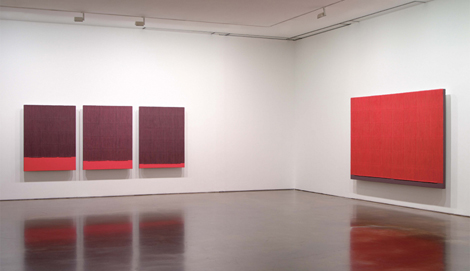
|
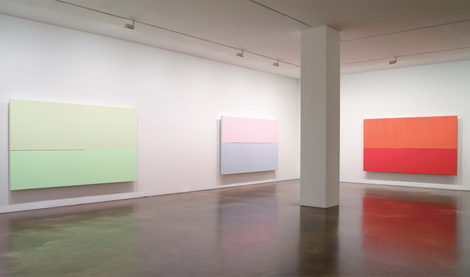
|
|
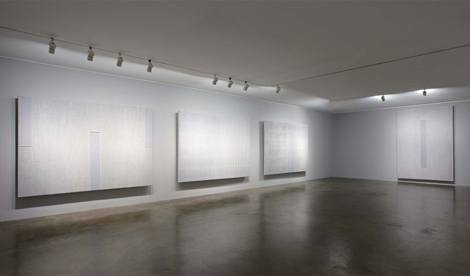
|
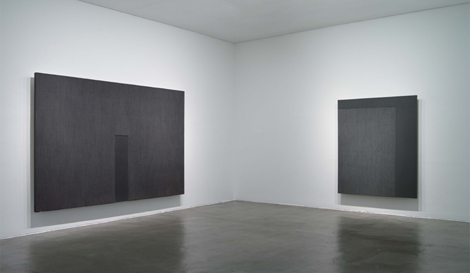
|
|

|
PUBLICATIONS
| Park, Seo-Bo |
_No.100915.jpg)
_No.080206.jpg)
_No.071208.jpg)
_No.070616-3.jpg)
_No.020524.jpg)
_No.890530-3.jpg)
_No.20_-_70.jpg)
